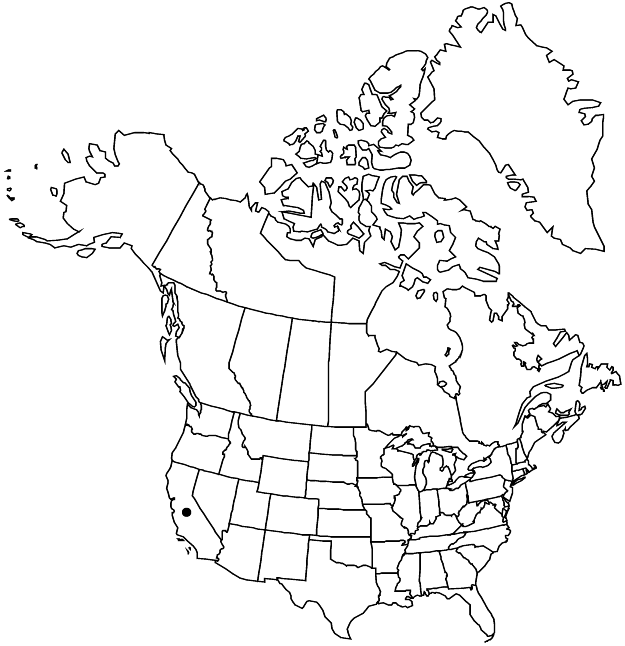Difference between revisions of "Eriogonum nudum var. pauciflorum"
Proc. Amer. Acad. Arts 12: 264. 1877.
FNA>Volume Importer |
FNA>Volume Importer |
(No difference)
| |
Revision as of 20:09, 24 September 2019
Plants 3–8 dm. Aerial flowering stems rarely slightly fistulose, 1.5–5 dm, glabrous. Leaves basal; blade 1.5–3 × 0.8–1.8 cm, densely tomentose abaxially, glabrous adaxially, margins plane. Inflorescences cymose, 20–50 × 10–30 cm; branches glabrous. Involucres 1(–2) per cluster, 5–7 mm, glabrous or sparsely pubescent. Flowers 2–2.5 mm; perianth white or, rarely, yellow, glabrous or pubescent. 2n = 40.
Phenology: Flowering Jun–Oct.
Habitat: Sandy, often granitic flats and slopes, grassland, saltbush, chaparral, and sagebrush communities, oak and montane conifer woodlands
Elevation: 1100-2800 m
Distribution

Calif., Mexico (Baja California).
Discussion
Variety pauciflorum is the southern montane, tetraploid expression of the species. It occurs in the Transverse Ranges, southward in the Peninsular Ranges of southern California (Kern, Los Angeles, Orange, Riverside, San Bernardino, San Diego, Santa Barbara, and Ventura counties), and south to the mountains of northern Baja California. Care must be taken when identifying specimens from the San Jacinto and Santa Rosa mountains in Riverside County to ascertain the age of the plants, as the annual Eriogonum molestum can closely resemble the perennial var. pauciflorum. The yellow-flowered expression of var. pauciflorum is worthy of cultivation.
Selected References
None.